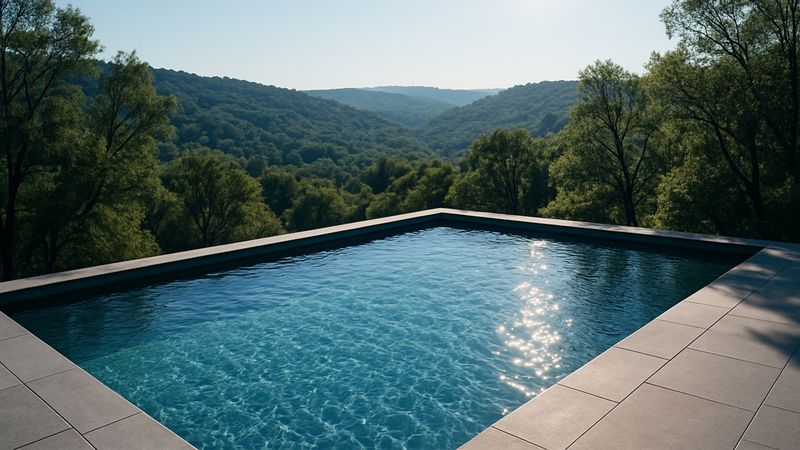Hey, welcome back to The Pool Nerd. So you're thinking about getting a plunge pool? I totally get it. After spending months researching plunge pools, and installing one myself, I've learned a ton that I wish someone had told me from the start. Consider this your friendly neighbor's guide to everything plunge pools – the good, the bad, and the "wow, I didn't know that!"
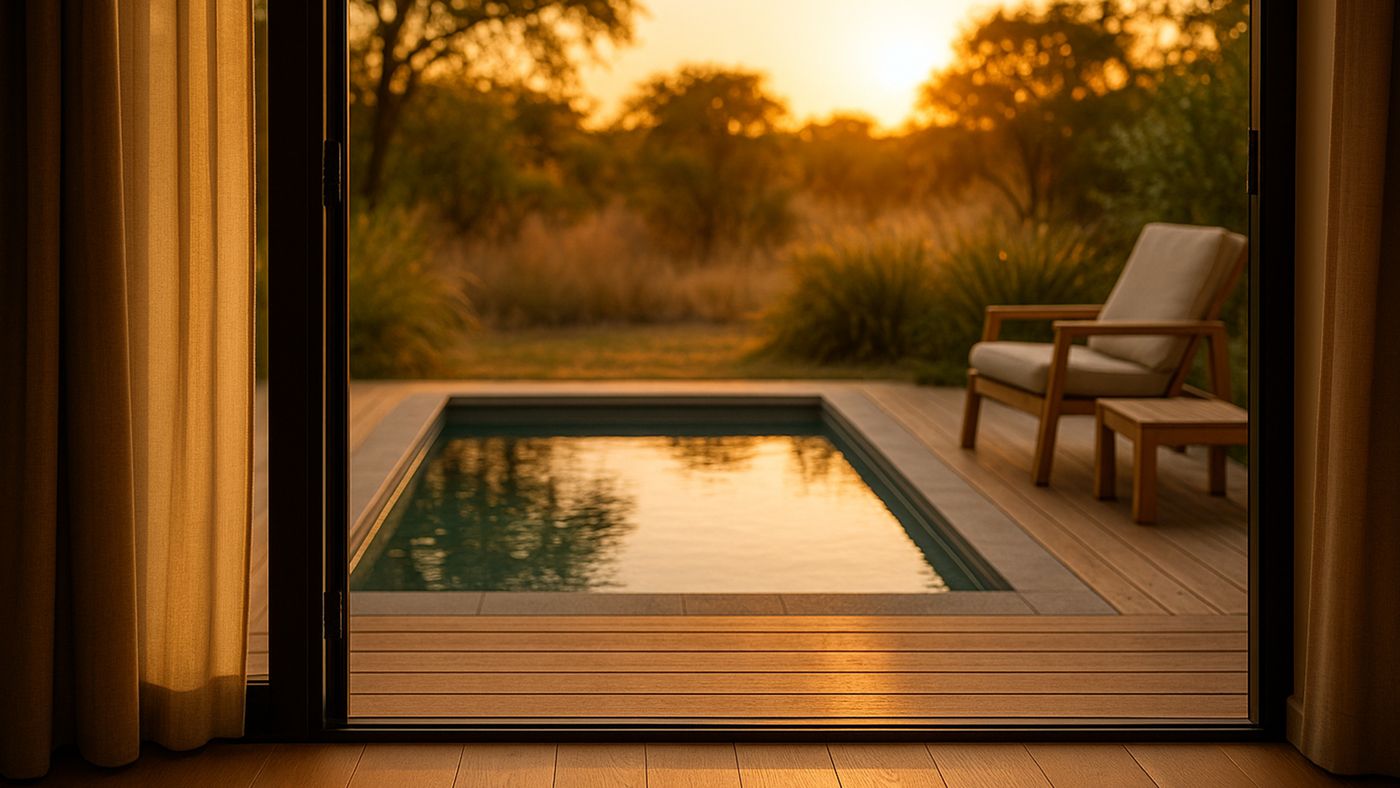
What is a Plunge Pool?
Okay, let's start with the basics. A plunge pool is basically a smaller, more intimate version of a traditional pool. Think of it as the perfect middle ground between a hot tub and a full-size pool. They're typically 8-24 feet long, 6-10 feet wide, and about 4-8 feet deep – perfect for cooling off, relaxing, or if you're into the wellness scene, doing those trendy cold plunges everyone's talking about on Instagram.
What I love about them is they're not trying to be something they're not. You're not going to swim laps in these babies (unless you get one with a swim jet or install one later), but that's not the point. They're about having your own private oasis without eating up your entire backyard or most importantly... your bank account.
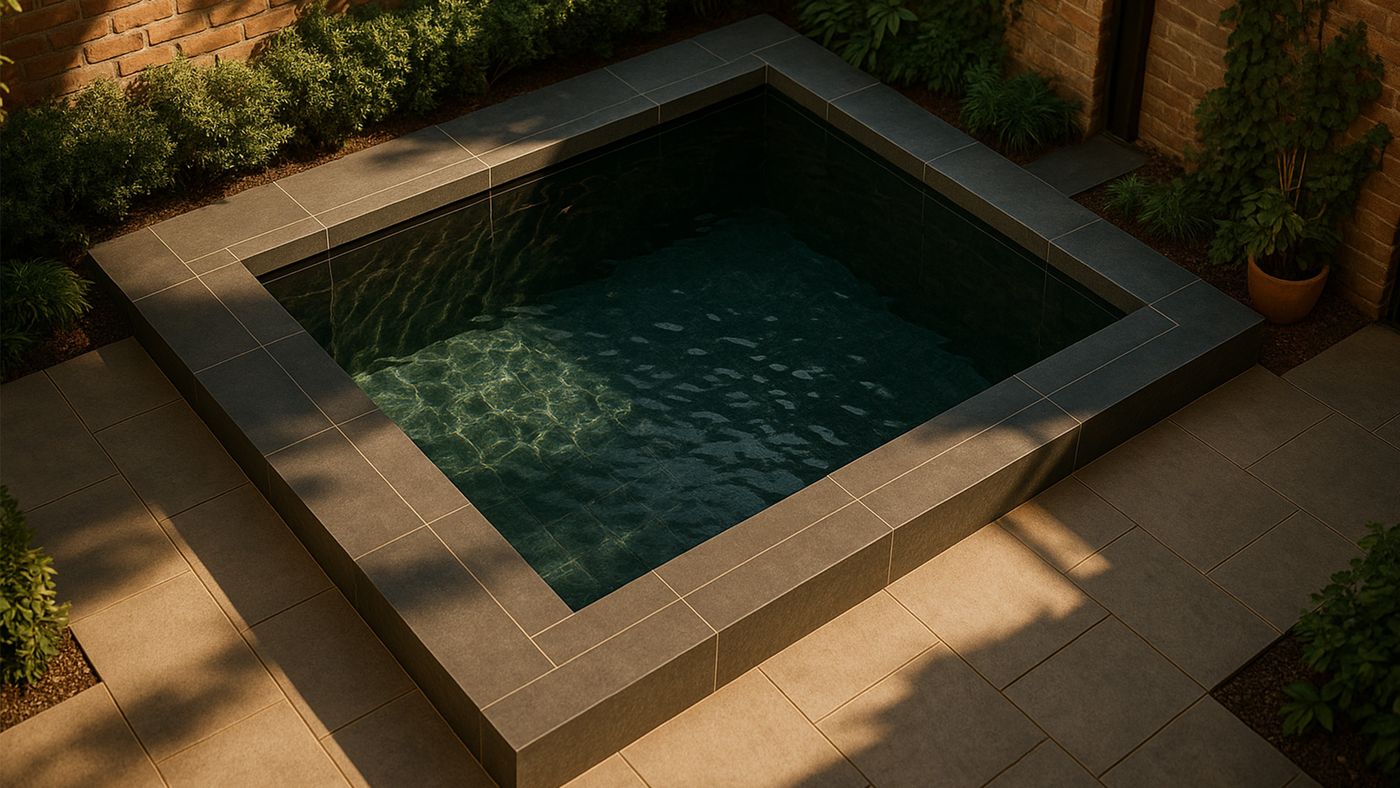
Why Choose a Plunge Pool Over a Traditional Pool?
Look, I'll be honest – I initially wanted a traditional pool. But then reality hit. My yard isn't huge, and when I got quotes for $100,000+ for a traditional gunite swimming pool, I nearly fell off my chair.
Here's what sold me on a plunge pool instead: They take up about 50-70% less space than traditional pools, cost half as much (sometimes even less), and the maintenance is SO much easier.
I'm talking 60-70% less chemicals, way lower heating costs, and I can clean the thing myself in about 20 minutes a week. My neighbor with the big pool? He's out there every weekend for hours or paying someone $200 a month to maintain it.
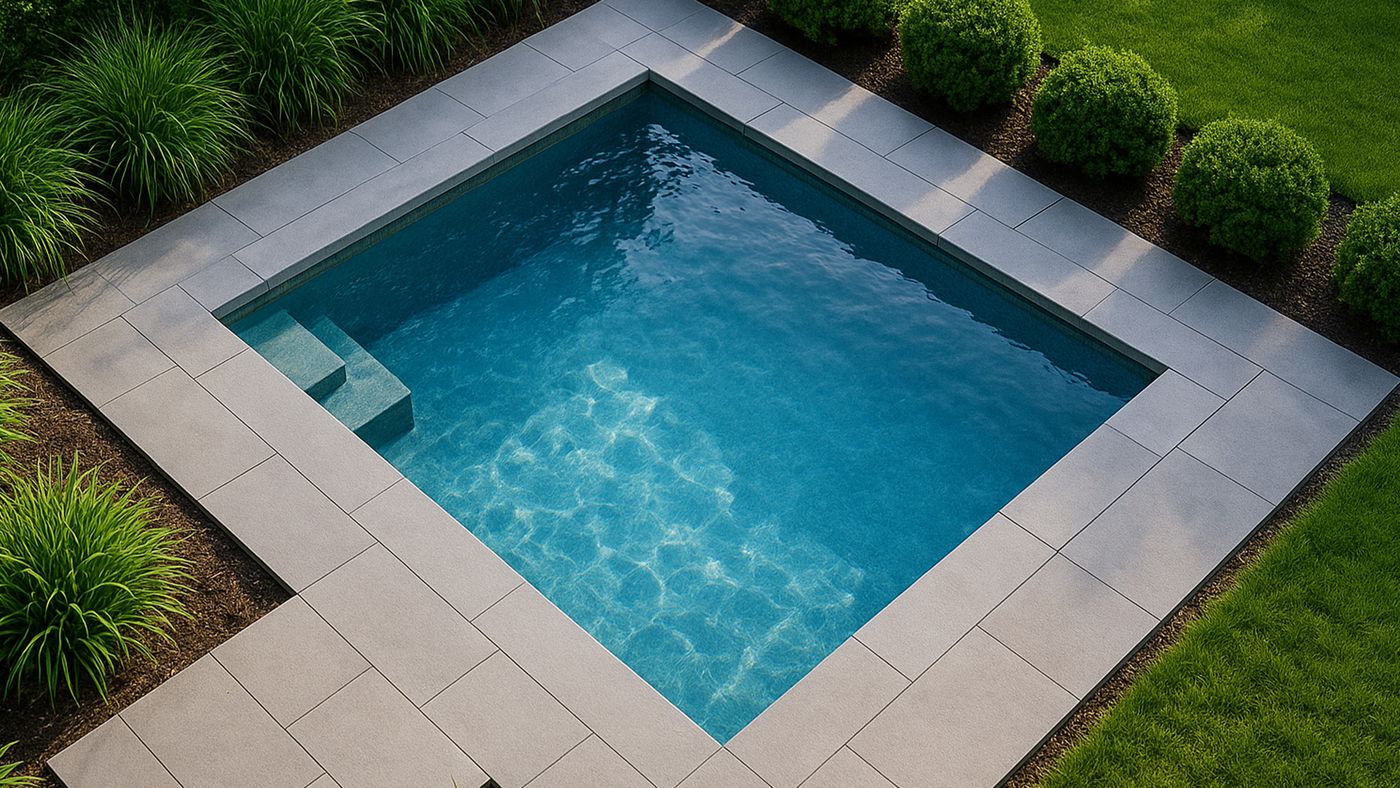
What You Need to Know
After months of research and talking to pool builders, here is what you need to know before you dive into adding a plunge pool to your backyard: Construction quality is everything. Don't just look at the pretty pictures – ask about the actual materials.
I prefer steel over concrete. It's stronger and built to last years. And before you think about rust, the steel is only the frame. The interior is typically an polymer membrane or liner.
Are they using high-quality fiberglass with proper gel coating? If it's concrete, what's the PSI rating? (You want at least 3,000 PSI, preferably 5,000). For steel pools, make sure it's marine-grade or aerospace-grade – trust me, you don't want rust issues three years down the line.
Installation support matters more than you think. Some companies just drop off a pool shell and wish you luck. Others provide full support or have certified installer networks. Guess which option leads to fewer headaches?
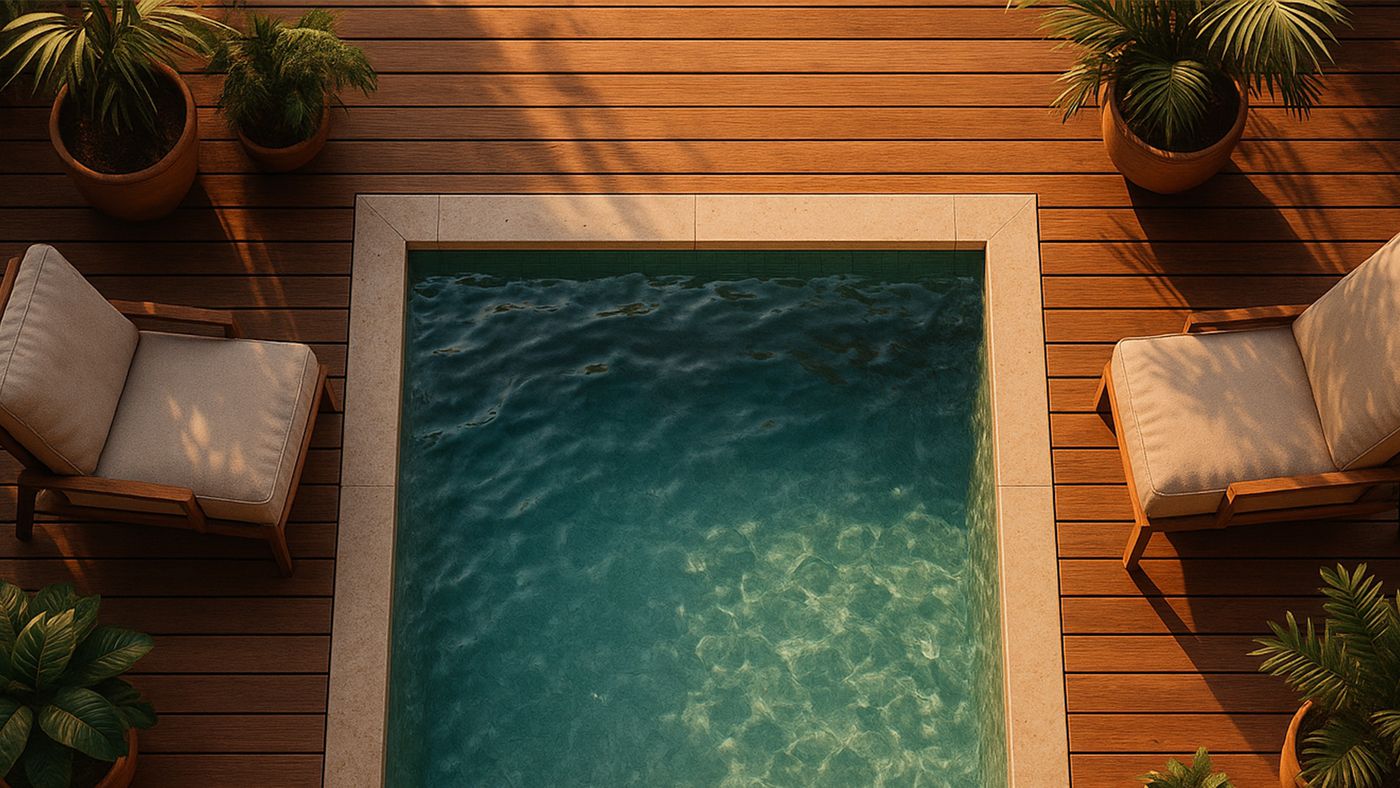
Common Mistakes to Avoid When Buying a Plunge Pool
Shopping for a plunge pool can be exciting, but it’s also full of hidden pitfalls that can cost you more money, time, and stress than you bargained for. Here are some of the most common mistakes homeowners make—and how to avoid them.
Oh boy, let me save you from the mistakes I almost made (and some my friends actually did make):
1. Thinking the quoted price is the final price.
That $25,000 pool might sound perfect—until you start adding everything else. Installation can run another $10–15k, permits often tack on thousands, fencing is usually required by code, and automatic covers aren’t optional if you want to keep leaves out. What looked affordable at first can easily balloon into a $45,000+ project.
2. Assuming any backyard will work without extra planning.
A 10×20 pool on paper might fit your yard, but access for delivery and space for decking, pumps, and filters is another story. More than one homeowner has ended up paying thousands extra for a crane rental because the pool couldn’t be maneuvered into place. Thinking ahead about logistics can save you a major surprise.
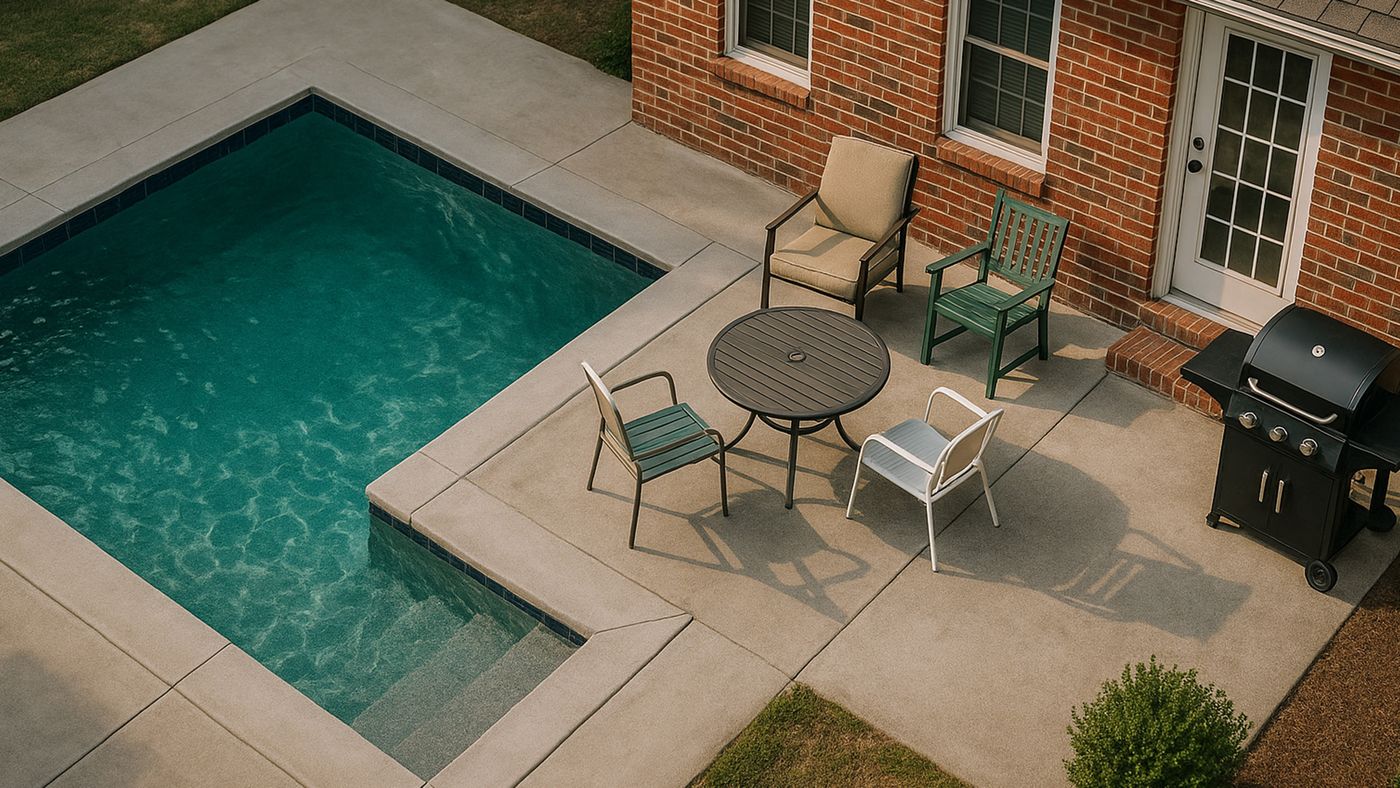
3. Hiring the cheapest contractor.
Cutting corners on installation is risky. A bargain installer may skip steps, leading to failed inspections, warranty headaches, or even leaks down the road. Pools built in controlled environments—such as modular or factory-made shells—reduce this risk because most of the critical work is done before it ever arrives in your yard. That leaves only straightforward site prep and hookups to handle locally.
4. Overlooking long-term durability.
Not all pool surfaces age the same. Traditional plaster can crack or stain within a few years, and vinyl liners may need replacing more often than expected. Newer materials like reinforced polymer membranes or engineered finishes can last decades with less maintenance, so paying attention to interior options can mean lower lifetime costs.
5. Forgetting about energy efficiency.
One hidden cost of plunge pools is temperature control. Concrete and fiberglass pools lose or absorb heat quickly, which means higher bills for heating in winter or frustration when the water feels like a bathtub in summer. Some modern pool systems use insulated shells—similar to how high-performance coolers hold temperature—which helps maintain stable water temps year-round and cuts energy use significantly.
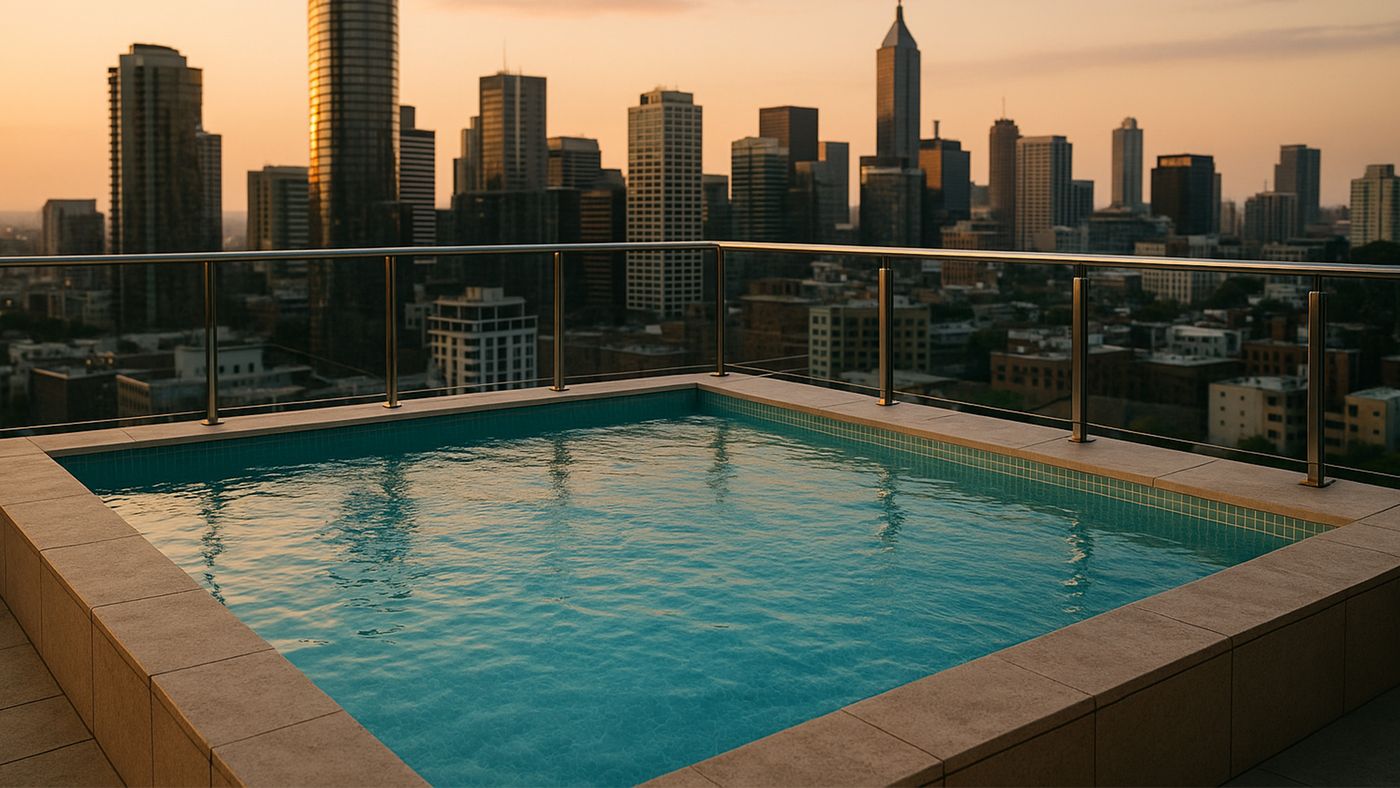
How Much Do Plunge Pools Cost?
Let's talk real numbers because that's what you really want to know, right? In 2025, here's what you're looking at:
- The Pool Itself: $25,000-$50,000+ (Depending on Size)
- Installation: $5,000-10,000+
A Plunge Pool will typically cost about $30,000-60,000+ depending on installation method, brand, and your specs. If you go with a brand like my top pick, Ecopool, you just design and buy your pool online. Then, it gets delivered to your door, ready to be installed in just 1-3 days. Installation is easy as placing it on a concrete or compacted pad, or you can dig a whole and drop it in for an inground setup. You never have to compromise, which is one of the biggest benefits of Ecopool.
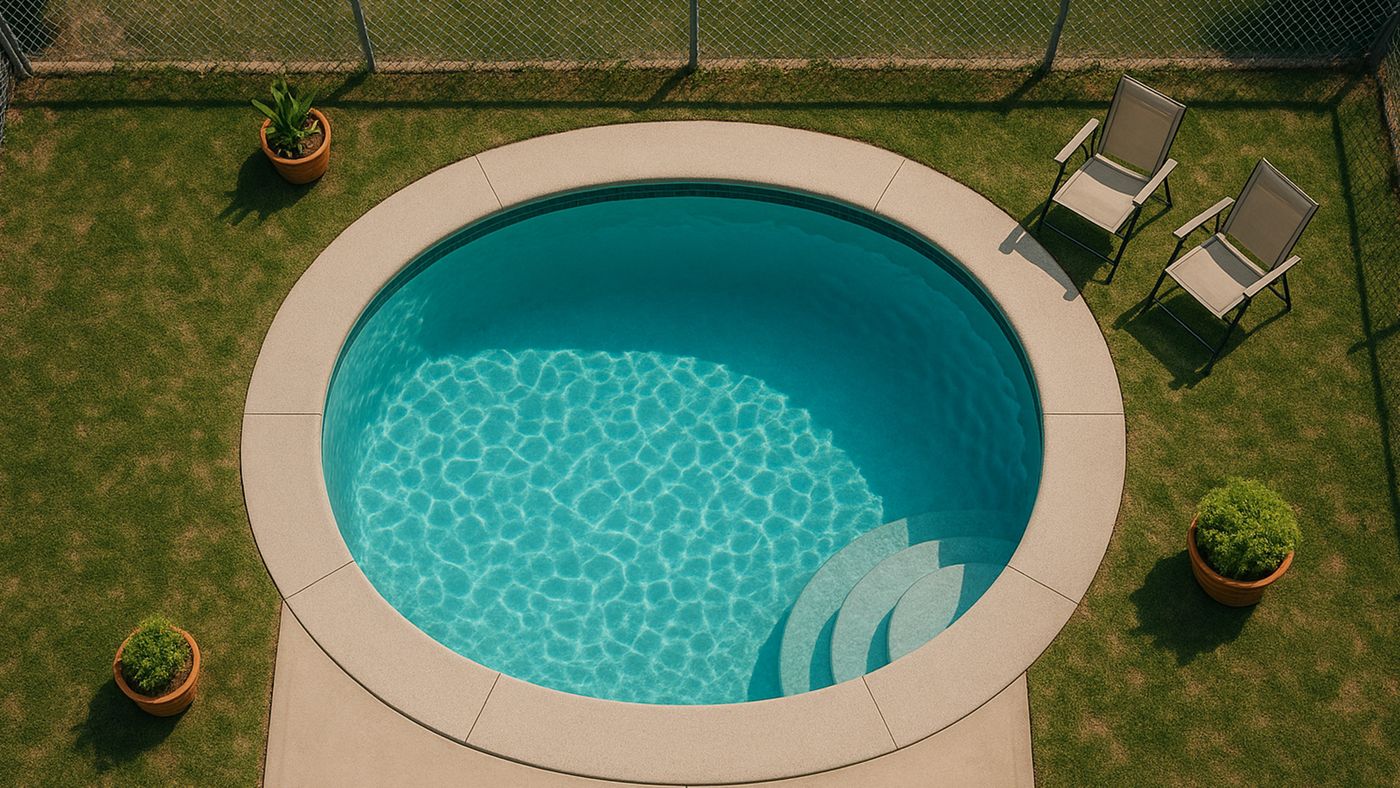
Types & Designs
Different Styles of Plunge Pools
The style options have gotten so much better in recent years! You've got your classic rectangular pools (which is my personal favorite), circular pools (the Plungie Arena is gorgeous at 11.5 feet diameter), and these cool organic freeform shapes that look like natural ponds.
What's really trending now are infinity edges (even on small pools!), and these combo "cocktail pools" that are designed for both lounging and cooling off. Some have built-in benches, tanning ledges, or spa jets. It's like they took all the best features of different pool types and shrunk them down. A lot of these options are add-ons and will cost more, but it's a small price to pay for your dream pool.
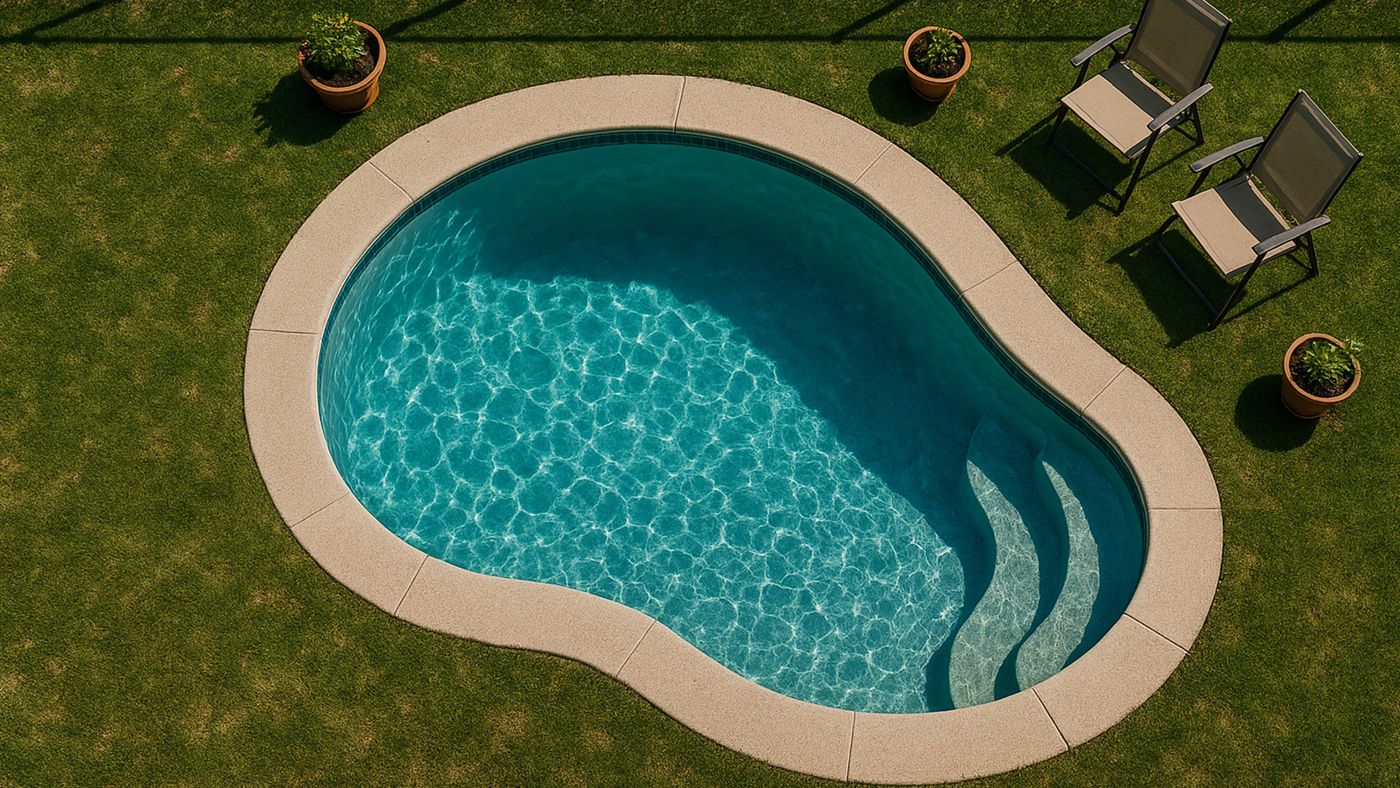
Plunge Pool Ideas
Here are some creative setups I've seen that made me go "wow, why didn't I think of that?":
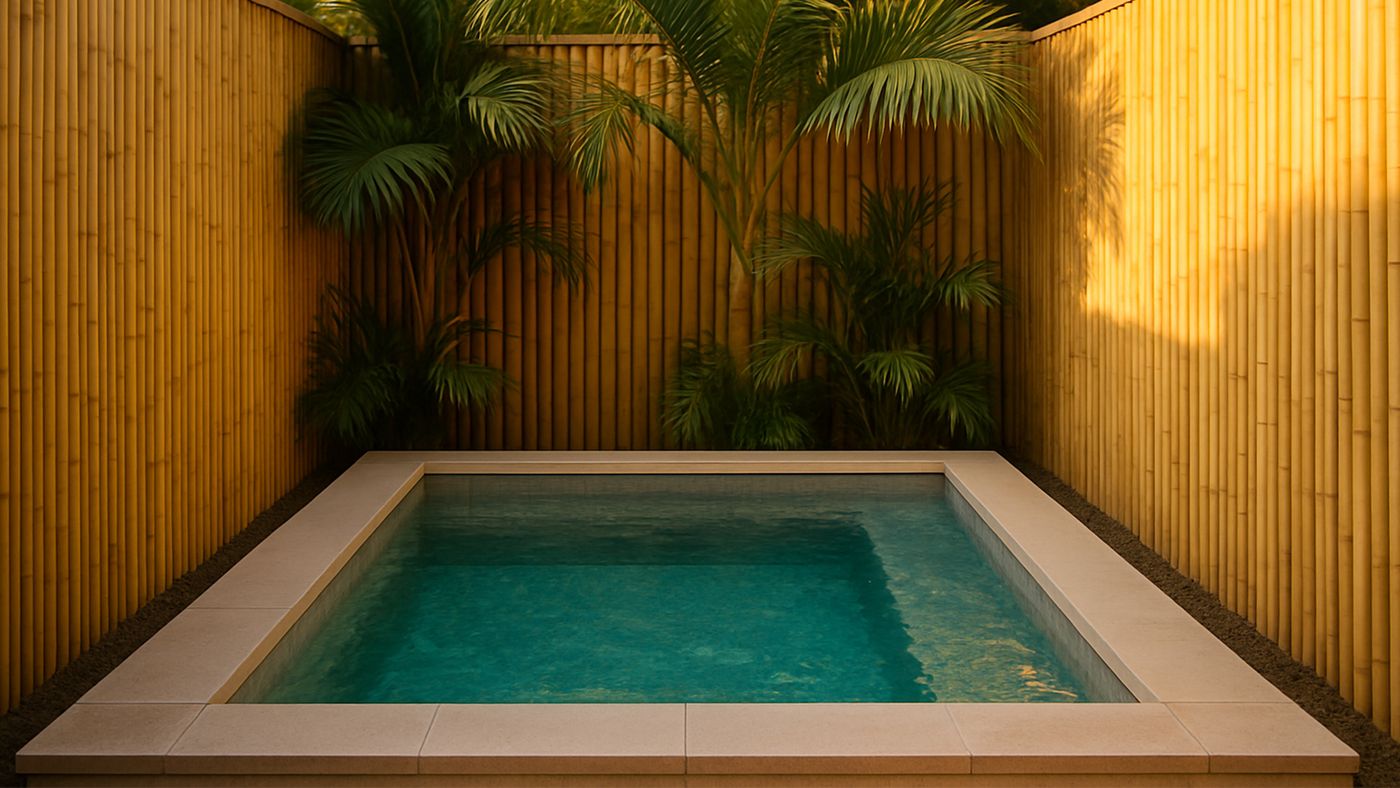
The corner oasis: Tucked into a forgotten corner of the yard with tropical plants around it
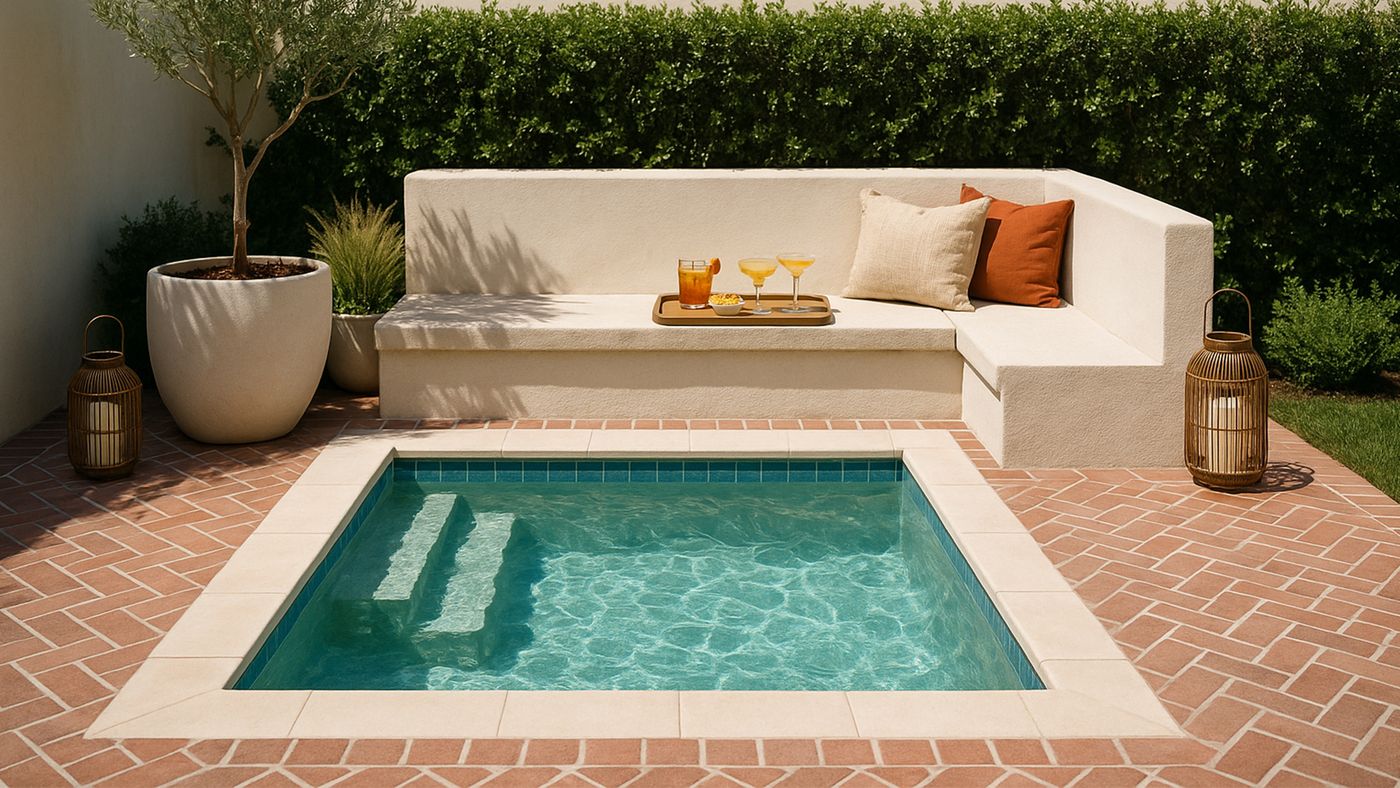
The deck integration: Built into a raised deck so it's level with your outdoor living space

The semi-inground: The partially inground look is slightly raise up over the deck of the pool.
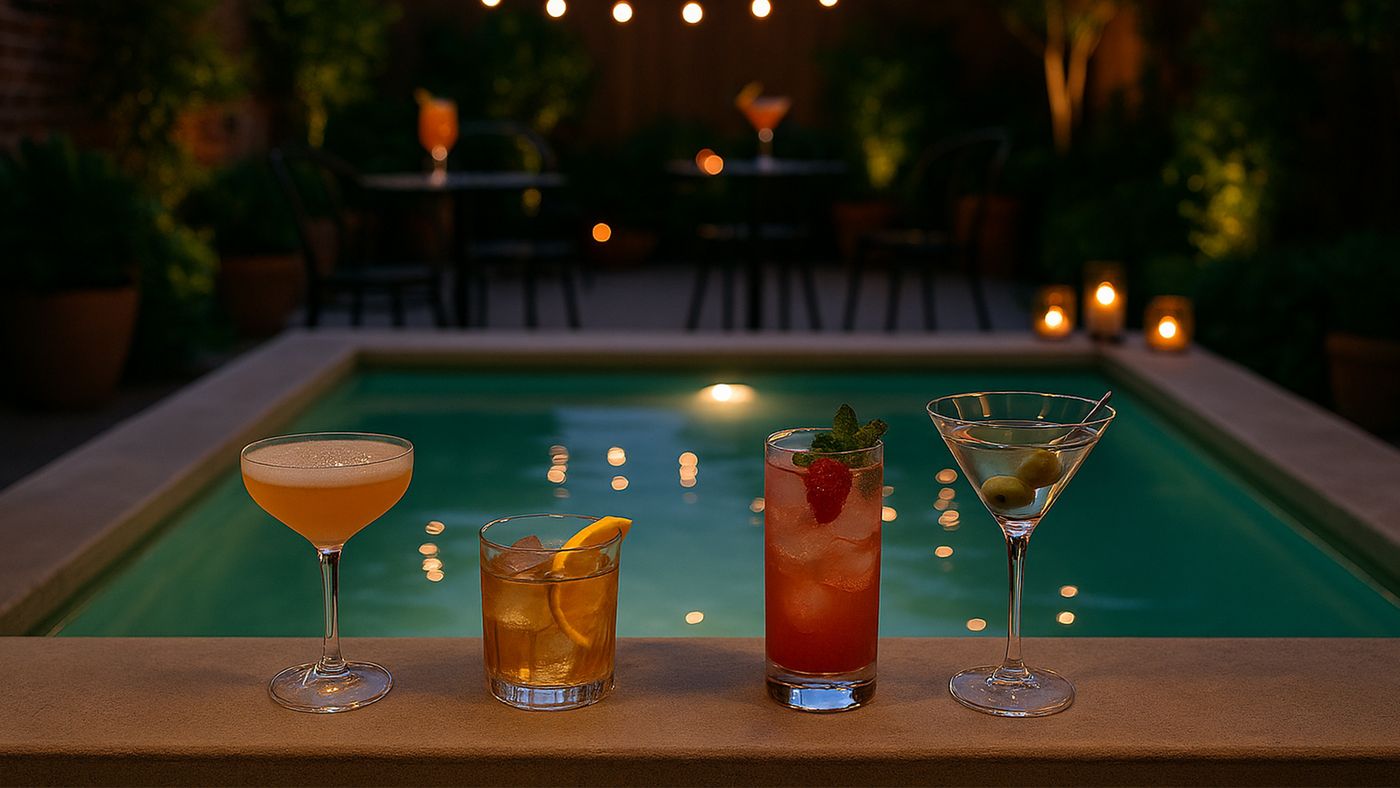
The party pool: Shallow cocktail pool with built-in seating all around the edges
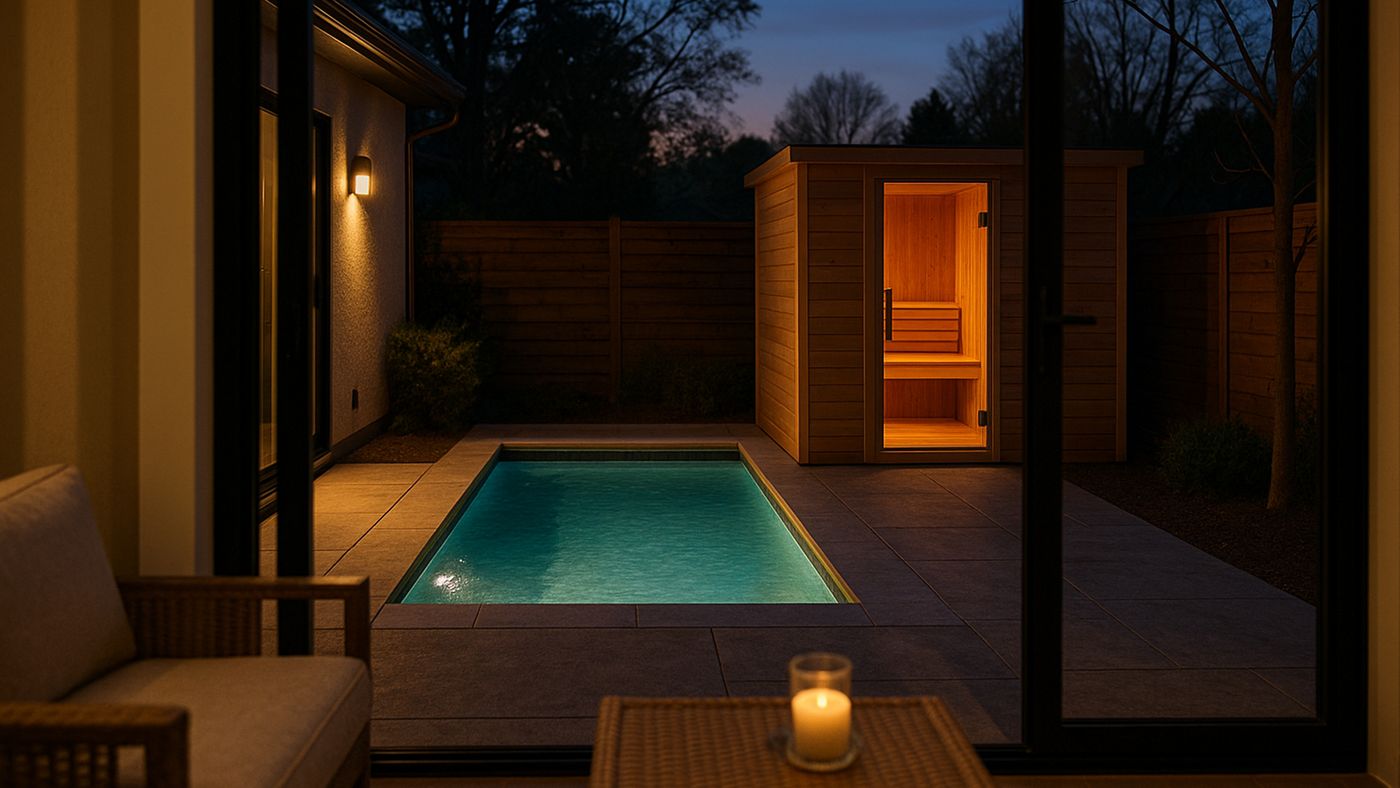
The wellness retreat: Cold plunge on one side of the patio, infrared sauna on the other
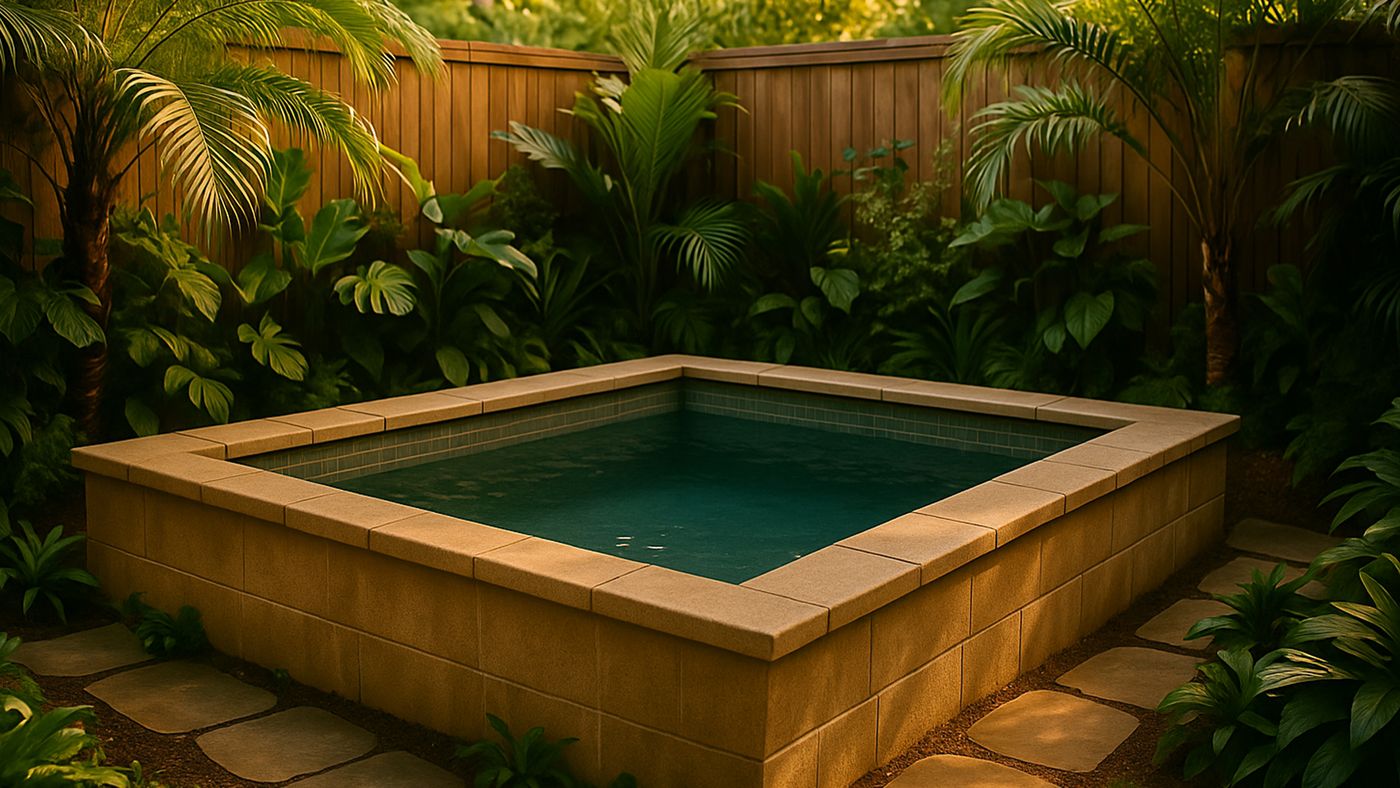
Inground vs. Above-Ground Plunge Pools
This was a big decision for us. In-ground looks more polished and integrates better with landscaping, plus it's more energy efficient (the earth insulates it). But it requires serious excavation, more permits, and costs about 40% more.
Above-ground is way faster to install (sometimes same day!), needs less permits (if any at all!), and you can take it with you if you move. The downside? It doesn't look as sleek, and you'll need steps or a deck to get in and out.
We went with above-ground, as in our area, we did not need permits or any HOA approval. You'll want to check your exact location, but it saved us money and time when building our pool.
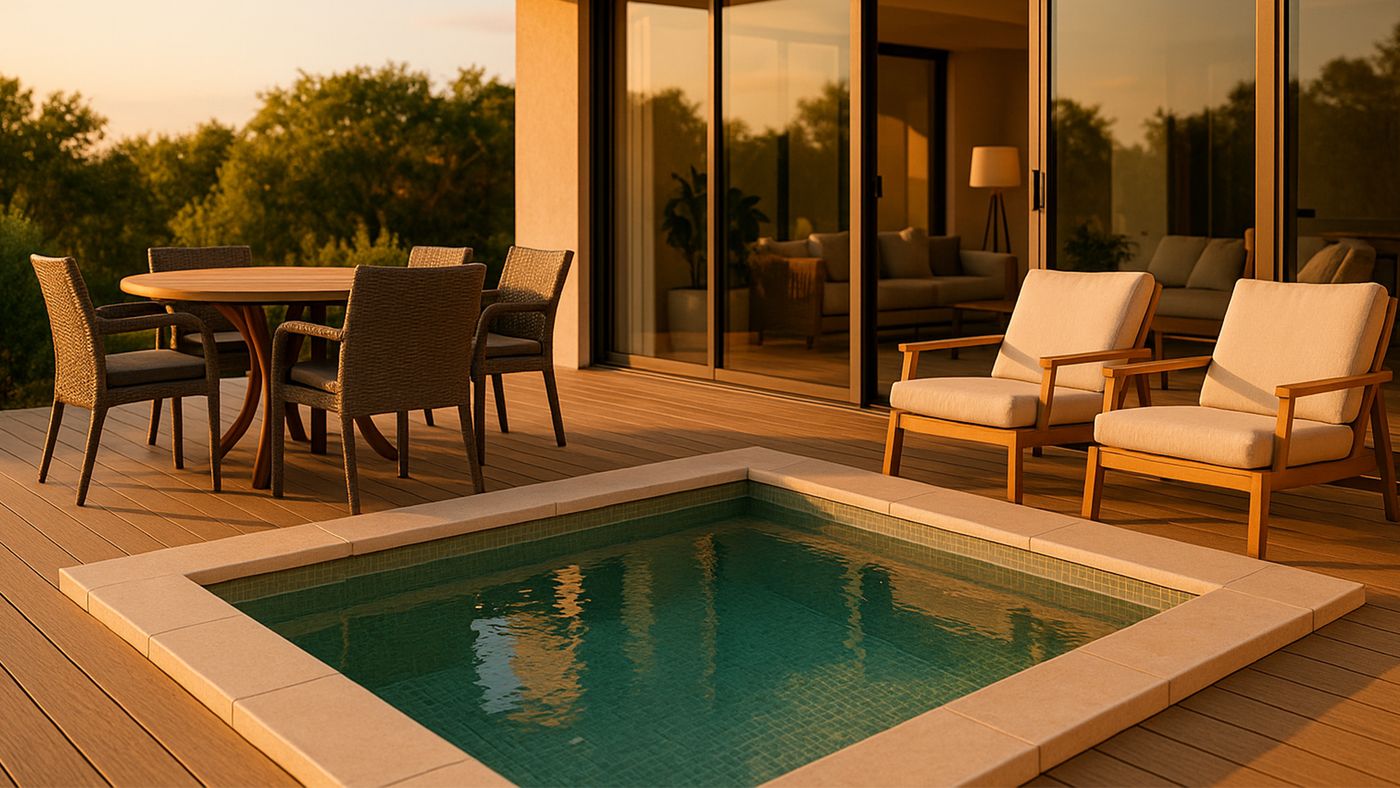
Materials: Concrete, Fiberglass, and Modular Steel
Let me break down what I learned about each material:
Fiberglass is like the Toyota Camry of pools – reliable, good value, low maintenance. The surface is super smooth (no scraped knees!), algae has a hard time sticking to it, and it uses 30% fewer chemicals. Installation is quick (2-3 days), and good ones come with 25-year warranties.
Concrete is the luxury option. You can make it any shape, add custom tile, do whatever you want. But it takes 2-3 months to install, needs resurfacing every 10-15 years, and the rough surface can be tough on feet and swimsuits.
Modular steel (like those container pools) is the new kid on the block. Super strong (we're talking aerospace-grade materials), unique looking, and crazy fast installation. The insulation is usually better than fiberglass too.
Container pools are another option too. They're easier to install, cheaper, and built to last. Brands like Ecopool have been making them for years. With a Zycore interior liner, they have pools that have tile-like interior.

Popular Sizes and Shapes of Plunge Pools
The most popular sizes I see are:
- 8x20 feet: Great for families, room for some movement
- 12x12 feet: Perfect for 2-3 people, fits in most yards
- 12x24 feet: Larger pool, perfect for families
Depth-wise, 4-5 feet is standard for lounging, 6-7 feet if you want to do water aerobics or have tall people who want to be fully submerged. Some people go 8 feet for diving, but check your local codes first!
Best Plunge Pools
Top Plunge Pool Brands in 2025
After all my research (and trust me, I went down the rabbit hole), here are the brands that kept coming up as the best:
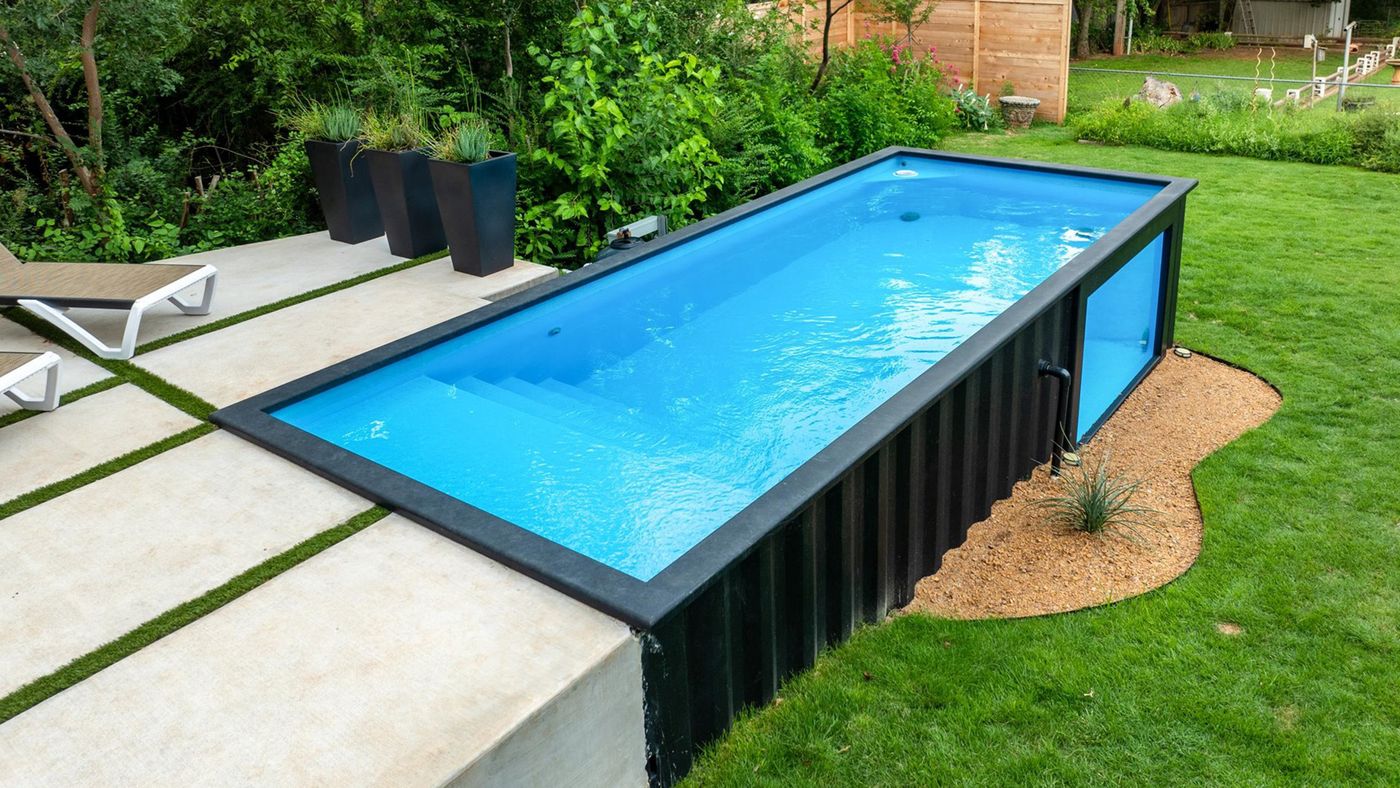
Ecopool: Best Overall
Ecopool really impressed me with their innovation. They're based in Texas and make both container pools and these incredible S-Series steel pools. What sets them apart is the tech – they use aerospace-grade steel that's supposedly 6x stronger than concrete, and their smart monitoring systems are like having a pool guy in your phone. Their container pools start around $22,000 and can be installed in literally hours if you go above-ground.
Ecopool S-Series
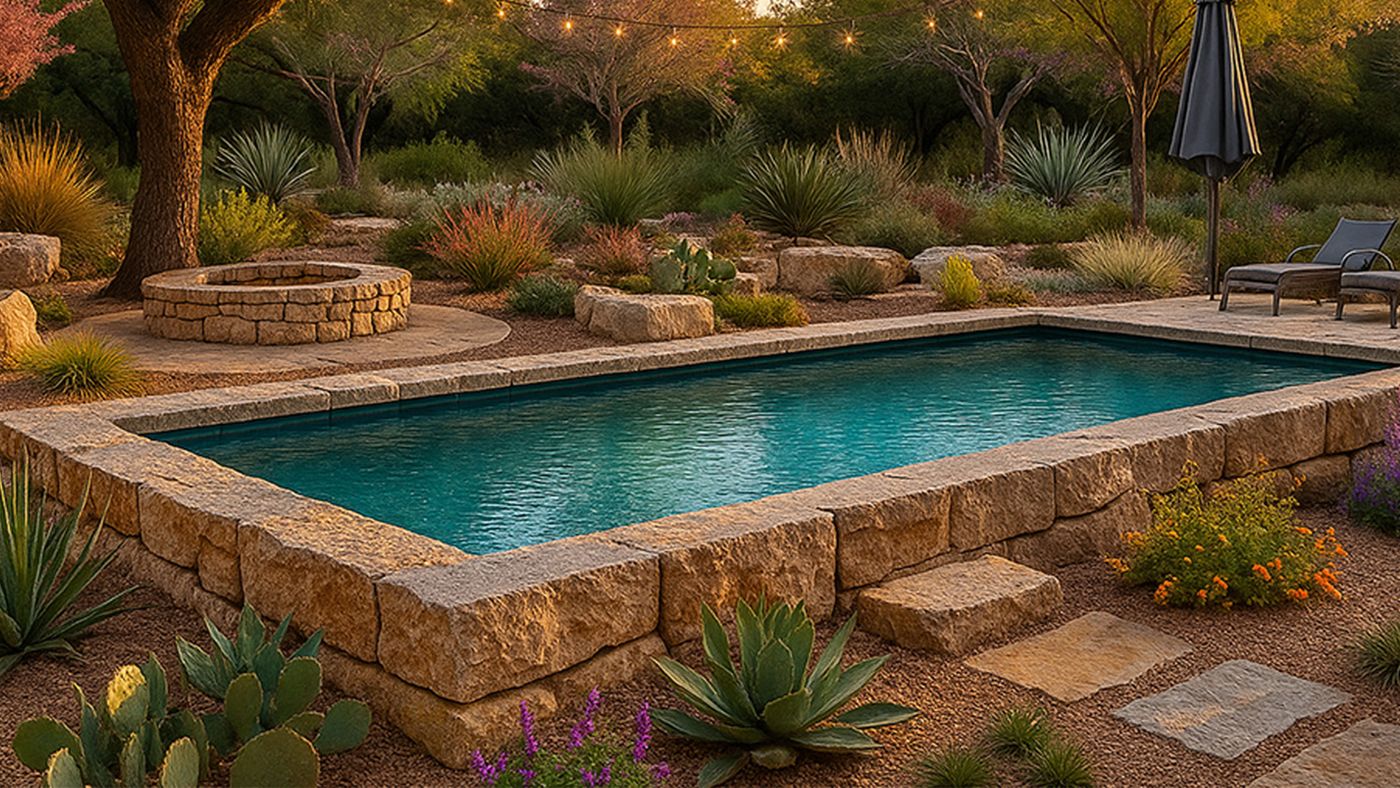
But here's what really convinced me Ecopool is the best option out there: First, their S-Series uses this tubular steel frame construction that's basically indestructible – we're talking about the same grade materials used in aerospace. The walls have R-10 insulation rating (most pools have virtually none), which means your heating costs stay super low. They've also got this proprietary Zycore™ membrane technology with 3,200 PSI tensile strength – that's stronger than most concrete pools!
What really blew my mind was their installation flexibility. You can install these babies above-ground (30 minutes to 6 hours – I'm not kidding), semi-inground, or fully inground (1-3 days max). Compare that to waiting months for concrete! And their smart features aren't just marketing fluff – they have commercial-grade automation systems with analytics that track your chemical usage, energy consumption, and even predict when maintenance is needed. It's like having a Tesla instead of a regular car.
You can pick between the Ecopool Architectural Series, which is the above-ground swimming pools that use SIP panels to create a beautiful piece of art in the backyard. Or you can choose the Ecopool Inground S-Series - which are placed in-ground
Learn more about Ecopool S-Series →
Ecopool Container Pools

The container pool line is equally impressive. They use upcycled shipping containers (eco-friendly bonus points!) with an 8-layer wall design that includes marine-grade steel, closed-cell foam insulation, and reinforced waterproofing. You can get them in 8' or 16' widths and lengths from 20' to over 40'. The best part? They come with UV-C disinfection systems standard, which means way fewer chemicals needed. My buddy got the 8x20 model for $22,320 and had it installed above-ground in an afternoon. His installation video went viral because people couldn't believe how fast it was.
The reason I keep coming back to Ecopool is they've managed to solve all the traditional pool problems: long installation times (solved with modular construction), high heating costs (solved with superior insulation), maintenance headaches (solved with smart monitoring), and structural concerns (solved with aerospace materials). Plus, they're one of the few companies really pushing innovation in what's been a pretty stagnant industry.
Learn more about Ecopool container pools →
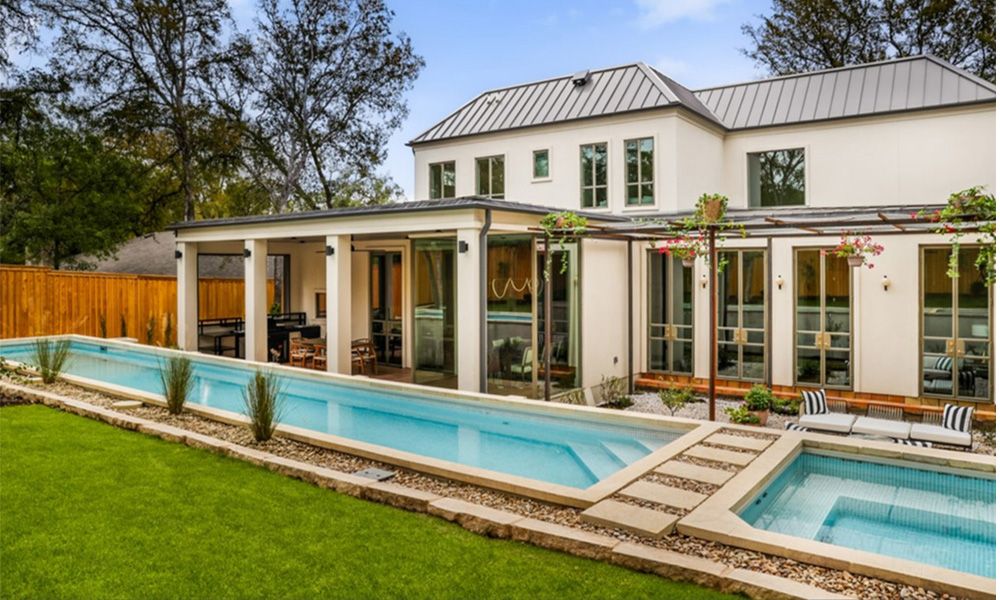
Where to Buy a Plunge Pool (Online and Local Options)
You've got three main options:
- Direct from manufacturer: Best prices, but you need to arrange installation separately. Great if you're handy or have a good contractor.
- Local pool dealers: More expensive (15-30% markup) but they handle everything. Look for ones that specialize in plunge pools, not just traditional pools trying to cash in on the trend.
- Online retailers: Good for research and price comparison, but I wouldn't buy a whole pool online unless you really know what you're doing.
My Favorite Plunge Pool Brand
If I had to do it all over again (and had the budget), I'd seriously consider Ecopool's S-Series. Here's why: The steel construction means no worrying about cracks or leaks like with concrete, and it's way stronger than fiberglass. But what really sells me is their tech integration – WiFi controls, automated chemical monitoring, energy usage tracking. It's like a smart home system for your pool.
Ecopools start at just around $20,000 plus installation. And by today's standards, that is super cheap. For about 1/3rd the price of a traditional gunite pool, you can have a larger inground pool that is higher quality and will last years to come.
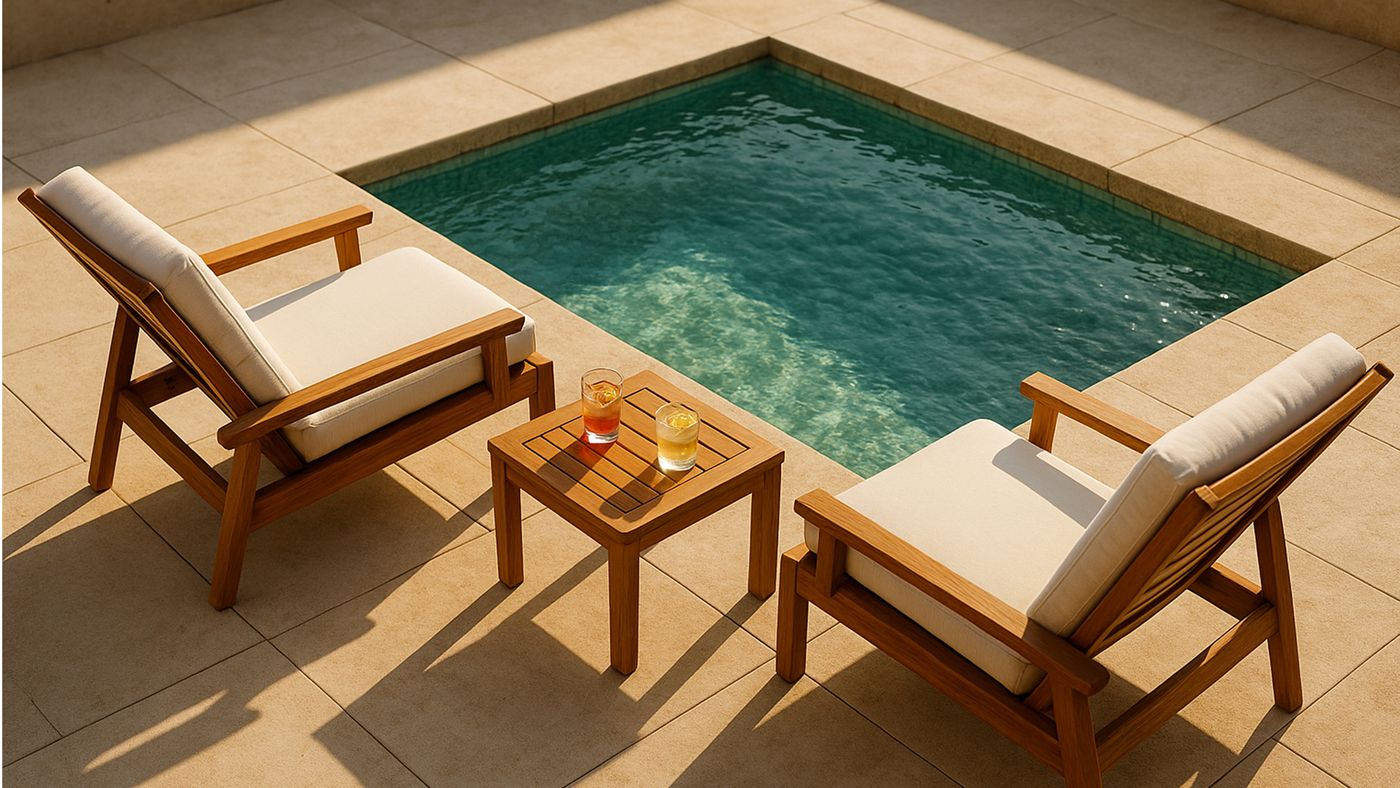
Benefits of a Plunge Pool
Health and Lifestyle Benefits of Plunge Pools
Okay, I'll admit I initially rolled my eyes at all the wellness talk, but there's actually something to it. The cold plunge trend isn't just Instagram hype – I started doing cold plunges in the morning (keeping it at about 55°F), and honestly, I feel amazing afterward. Better than coffee!
But even if you're not into the cold therapy thing, just having a place to cool off after yard work, somewhere for the kids to splash around safely, or a spot to float with a drink on summer evenings – it's been a game-changer for our lifestyle. We use it way more than I expected, probably because it's so easy to maintain.
Space-Saving Backyard Solutions
This is where plunge pools really shine. Our entire pool setup, including the deck around it, takes up about 400 square feet. That's it! We still have room for our garden, the kids' trampoline, and the outdoor dining area.
I've seen people put them in side yards that are only 10 feet wide, on rooftops in the city, even in courtyards completely surrounded by house. Try doing that with a regular pool!
Heating, Cooling, and Year-Round Use
Here's something cool – because they're smaller, you can actually afford to heat them year-round. Our heating costs are about $50-100 per month to keep it at 85°F, compared to our friends who pay $300+ for their big pool.
In summer, we let it cool down to around 75°F for refreshing dips. Some people with cold plunge setups have chillers to keep them at 50-60°F year-round. The versatility is awesome.
Maintenance and Care Tips for Plunge Pools
Real talk: maintenance is SO much easier than I expected. Here's my actual routine:
- Daily (2 minutes): Skim leaves if needed, check the water level
- Weekly (20 minutes): Test and adjust chemicals, clean the filter basket, brush the sides if needed
- Monthly (30 minutes): Deep clean the filter, check all equipment, shock if necessary
Chemical costs? About $40-60 per month in season, maybe $20 in winter. Compare that to $100-200 for a full-size pool. The smaller water volume means everything is just... easier.
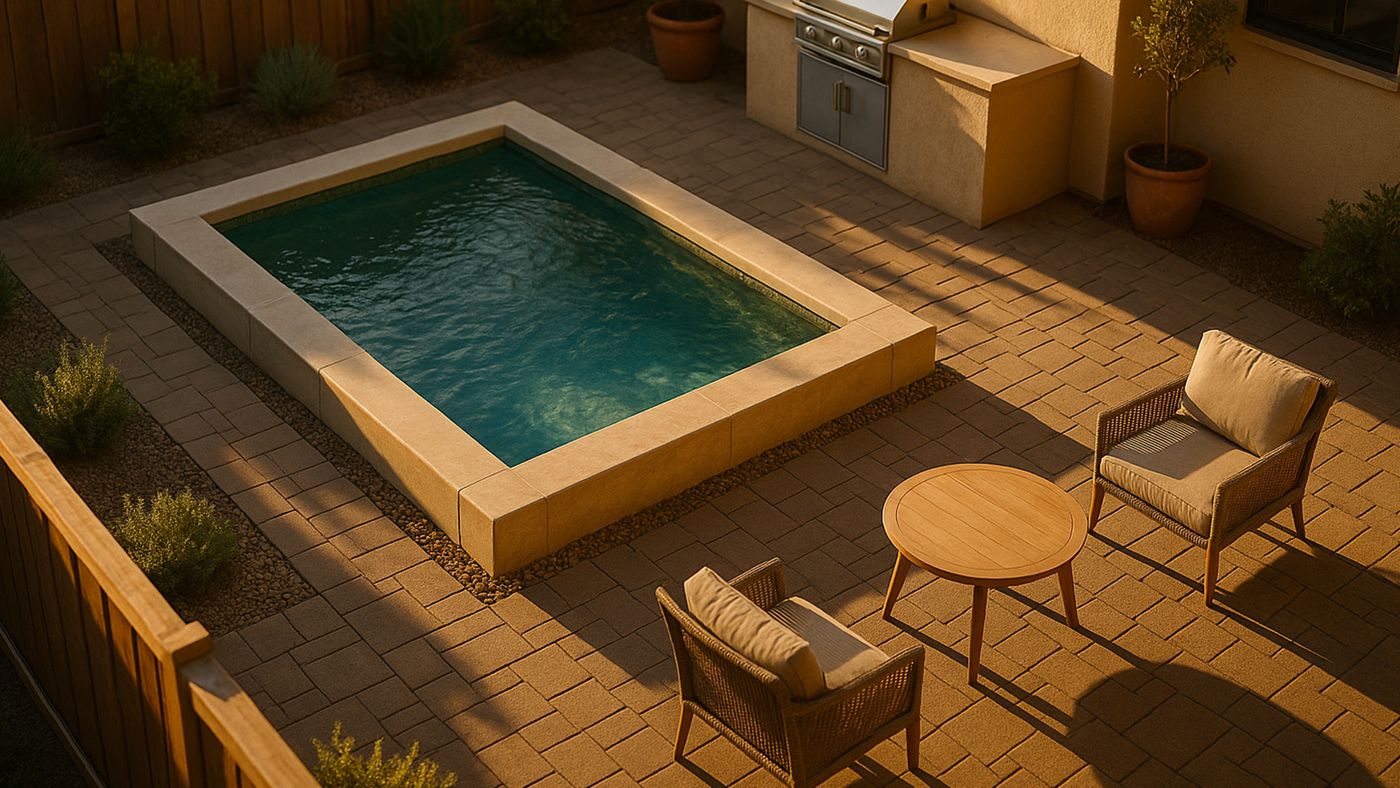
Installation & Setup
What to Expect During Plunge Pool Installation
Here's the real timeline (not the "everything goes perfectly" timeline). Note, this is for an Ecopool and what I experienced. It may change based on your location:
- 1-2 Days: Site prep and excavation (1-2 days of noise and mess)
- 1 Day: Base preparation and plumbing/electrical rough-in
- 1 Day: Pool placement (the exciting day!)
- Then all you need to do is add water!
Weather will mess with this timeline. Rain delays are real. Equipment availability can cause delays. You only need to plan for a few days start to finish, and you'll be pleasantly surprised if it's faster.
DIY vs. Professional Installation
I'm pretty handy, and even I wouldn't DIY a plunge pool installation. Here's why:
The excavation alone requires equipment rental ($2,000+) and knowing what you're doing. Mess up the level by even a few inches? Your pool won't work properly. Then there's electrical (240V isn't something to mess with), plumbing (one bad connection = major leak), and permits (good luck navigating that as a homeowner).
Professional installation typically adds $9,000-14,000 to your cost, but it includes warranty protection, proper permits, and someone to blame if something goes wrong. Worth every penny in my opinion.
Accessories and Upgrades to Consider
Here's what's actually worth spending extra on:
- Robotic Pool Cleaner ($500-2,000): Vacuums up leaves, debris, and keeps your pool clean
- Smart controls ($1,500-3,000): Control everything from your phone. So convenient.
- LED lighting ($500-2,000): Color-changing lights make evening swims magical.
- Heating system ($2,000-5,000): Extends your season by months.
- Jets or current system ($3,000-8,000): If you want to exercise in it.
Skip the fancy water features unless you really love them – they're expensive and one more thing to maintain.
Comparisons & Alternatives
Plunge Pools vs. Swim Spas: What's the Difference?
I looked hard at swim spas too, so here's the real comparison:
Swim spas are like hot tubs on steroids – self-contained units with powerful jets for swimming in place. They're great if you want to exercise, heat up quickly, and have massage jets. But they're expensive to run (those jets and heaters aren't cheap), you're limited to the shell design, and the constant motor noise can be annoying.
Plunge pools give you more open space, customization options, and they're quieter. They're better for actual cooling off and having multiple people in at once. But they don't come with built-in exercise features unless you add them.
For me, the plunge pool won because I wanted something that felt like a real pool, just smaller. Swim spas feel more like elaborate hot tubs.
Are Plunge Pools Worth It Compared to Full-Size Pools?
100% yes, if you're realistic about what you want. You're not hosting pool parties for 20 people or teaching kids to swim laps. But for 95% of what most people actually do in their pools – cool off, relax, let kids play – a plunge pool is perfect.
The math is simple: Half the cost to install, 60-70% less to maintain, takes up half the space, and you'll actually use it more because it's not a hassle. My friends with big pools use them maybe 20 times a year. We're in ours 3-4 times a week because it's so easy.
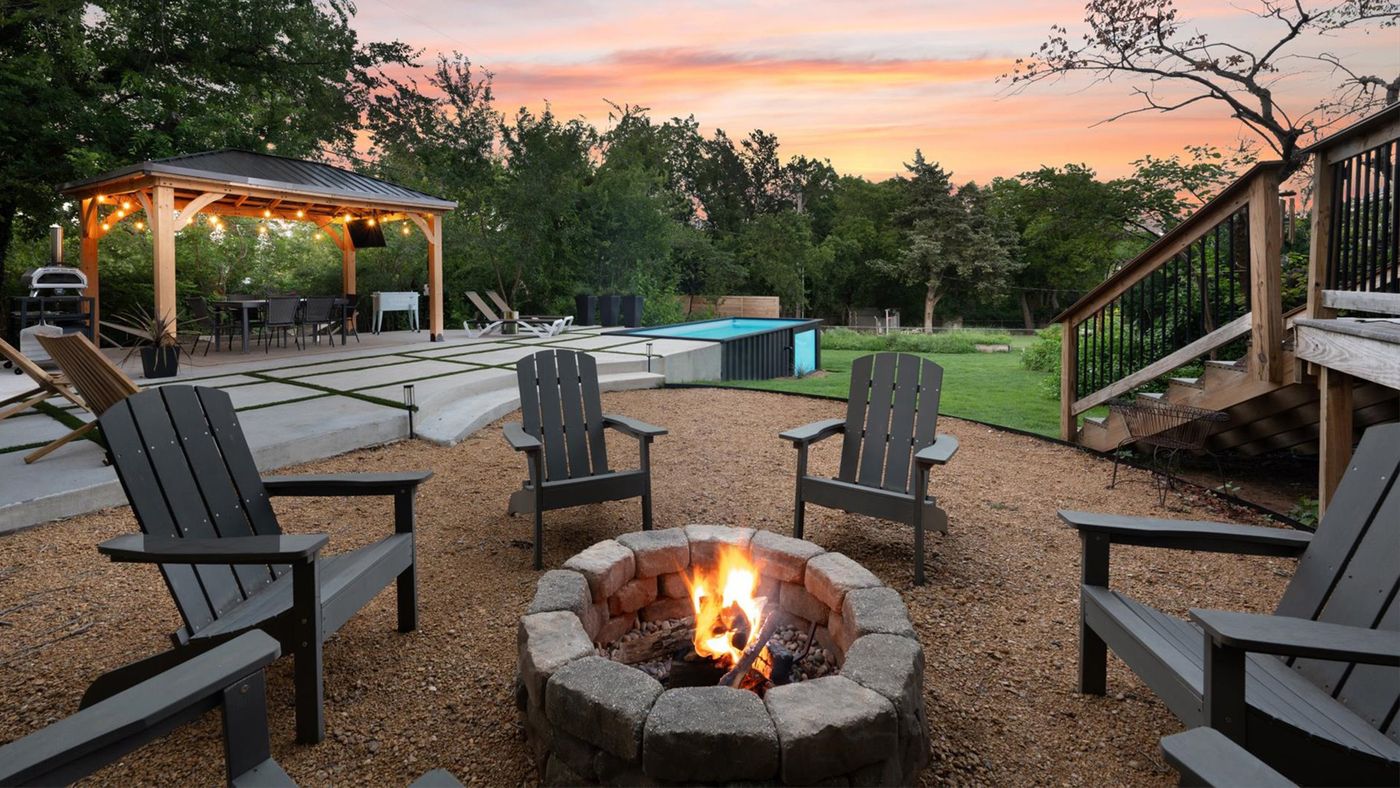
Final Verdict
Is a Plunge Pool Right for You?
Here's my honest take: A plunge pool is perfect if you:
- Have a smaller yard (or want to keep most of it for other things)
- Want the pool experience without the pool hassle
- Are interested in wellness benefits like cold therapy
- Have a realistic budget ($25,000-50,000 all-in)
- Value low maintenance over maximum swimming space
It's probably NOT for you if you:
- Have a large family that wants to swim simultaneously
- Dream of doing laps every morning
- Want to host big pool parties regularly
- Have a budget under $15,000 (go with an above-ground traditional pool)
Final Thoughts on Choosing the Best Plunge Pool
After living with our plunge pool for a while now, I can honestly say it was one of our best home improvements. We use it constantly, the maintenance is manageable, and it's added real value to our property (and our lifestyle).
My advice? Do your homework on brands (seriously consider Ecopool's S-Series or container options), get multiple quotes, ask for references, and budget for the TOTAL cost, not just the pool. Visit showrooms if you can – photos don't do these things justice.
And remember, the "best" plunge pool is the one that fits your space, budget, and lifestyle. Don't get caught up in what's trendy on social media. Get what works for you and your family.
The plunge pool market is exploding right now (growing over 5% annually), and for good reason. They make pool ownership accessible and enjoyable for those of us with normal-sized yards and budgets. If you've been on the fence, 2025 is a great time to take the plunge (pun intended).
Feel free to reach out if you have questions – plunge pool owners have to stick together! And trust me, once you're floating in your own private oasis on a hot summer day, drink in hand, maintenance taking all of 20 minutes a week, you'll wonder why you didn't do this sooner.
Your resident pool aficionado.
For over 5+ years, The Pool Nerd has been a leading source in the swimming pool industry. With years of experince owning a swimming pool, our hope here is to guide and help making owning a swimming pool easier.
